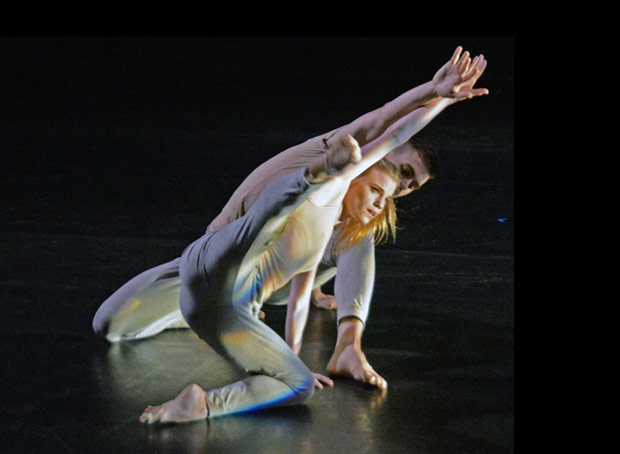
© Dave Morgan. (Click image for larger version)
Rambert
New Choreography
with works by Luke Ahmet, Simone Damberg Wurtz, Dane Hurst, Patricia Okenwa and Pierre Tappon
London, The Place
16 November 2014
Gallery of pictures by Dave Morgan
www.rambert.org.uk
www.theplace.org.uk
Emerging choreographers among the Rambert ranks are nurtured by the dance company, which realises how crucial such talent is for its development. This mixed night of new work at The Place brought together examples by established and new dancemakers – and produced a predictably mixed bag.
Of the five works presented, the stand-out was RIFT, the first work for Rambert by Danish dancer/choreographer Simone Damberg Würtz. The only accompaniment is Würtz’s sporadic Danish spoken-word discourse, creating a solemn, eerie, mournful sound-space for Daniel Davidson and Edit Domoszlai to move through – and demonstrating that this is a choreographer who can adeptly harness the power of silences. And, given the downbeat theme being explored, it doesn’t hurt that, thanks to The Killing, softly spoken Danish can set off all sorts of dark connections for British Scandi noir fans.

© Dave Morgan. (Click image for larger version)
RIFT takes its inspiration, we’re told, from a Danish advertisement highlighting the dangers of not wearing a seatbelt while driving. Würtz’s distinctive choreographic language incorporates the jerking, shuddering movements you’d associate with crash test dummies filmed in simulations. But the piece expands beyond this to offer a set of small scenes grappling with the sense of guilt that can prevail after a death. It does so rather beautifully, with Davidson and Domoszlai channelling grief, anger, bewilderment and exhaustion into their sharply delineated, elegantly controlled movements. You feel them as two people desperate for the support of each other, and bowed by the weight of each other – a testament to the eloquence of Würtz’s style.
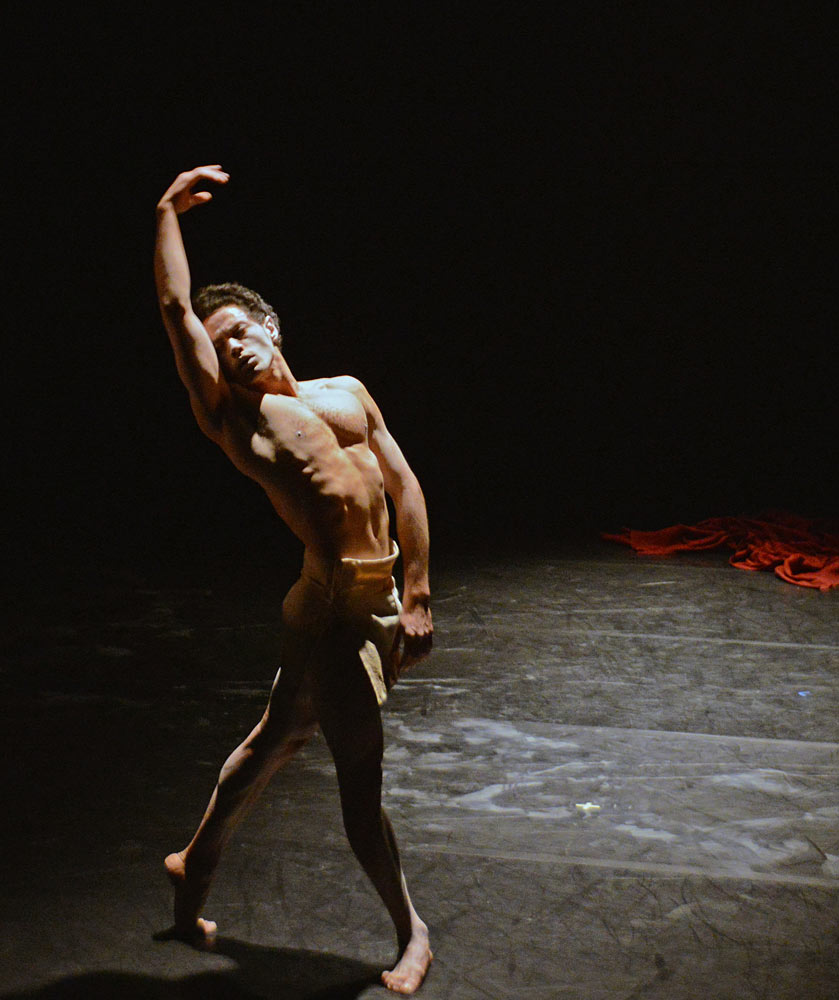
© Dave Morgan. (Click image for larger version)
Closing work O’dabo, choreographed and danced by Dane Hurst, takes on equally weighty if very different themes. The title translates from Yoruba as ‘until I return’ and is a distillation of Hurst’s reflections on Nelson Mandela. Hurst starts in the shadows, rising from the floor and revealing he’s covered in white dust, which billows off his body in loose clouds when he shakes himself. It’s a startling visual image and Hurst’s performance is a powerful portrayal of struggle and determination, of a ‘long walk’ carried out against a backdrop of adversities, which leaves him visibly shaken by the end. Even if he doesn’t always seem to have complete control of his sprawling and rather grandiose premise, Hurst’s muscular dancing is deeply impressive.
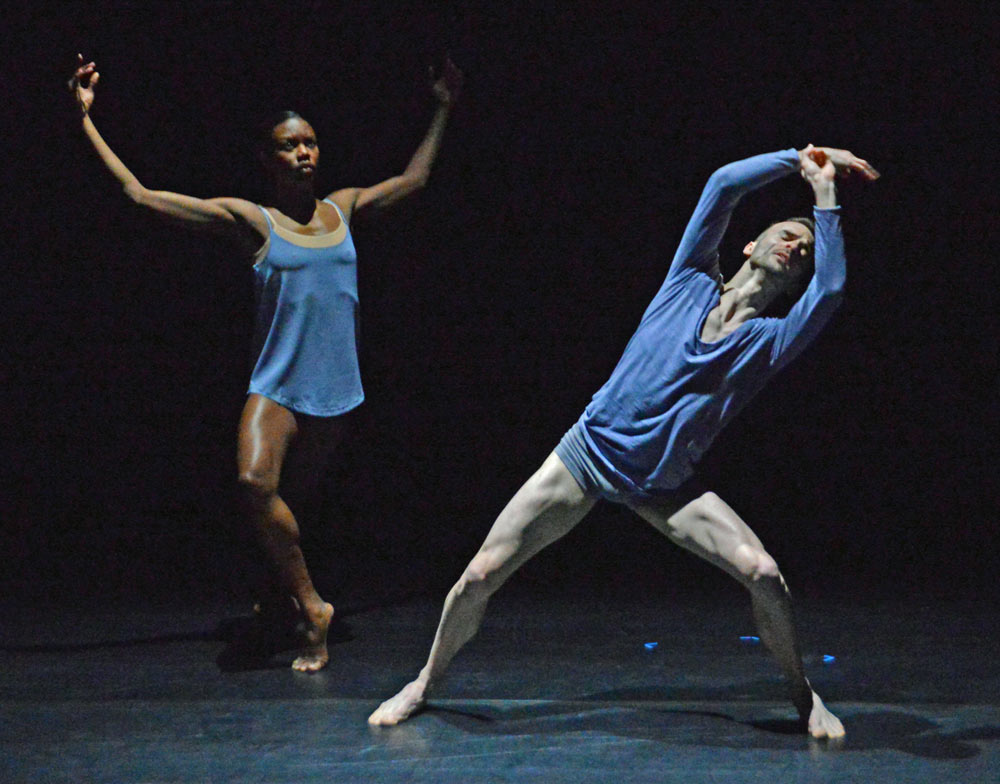
© Dave Morgan. (Click image for larger version)
Luke Ahmet’s Unspoken Dialect is a work for two dancers, apparently inspired by our ongoing internal dialogues. Adam Blyde and Carolyn Bolton make a lot of repetitious movements, sometimes individually and sometimes in sync, but remain stubbornly separate: there’s not a lot here that suggests dialogue or duality, and so the idea remains rather waftily ungraspable. So too the relationship that is at the centre of Pierre Tappon’s Related, where the connections between Liam Francis, Antonia Hewitt and Stephen Wright stay decidedly opaque, as does the point of some rather odd props. Francis’ beautiful, strong solo, however, hints at some real choreographic talent lurking under a rather ill-defined premise.

© Dave Morgan. (Click image for larger version)
Patricia Okwena’s No.1 Convergence, the only group work, matches score and movement as she explores ideas of harnessing cooperative power. It’s a piece with an electrical crackle, where pulses and surges propel the six dancers, and a move by some of the group sets off something else in another set. Energy and gravity shift them from wriggling mass to coordinated group and back again, but the whole could have done with a sharper sense of direction.













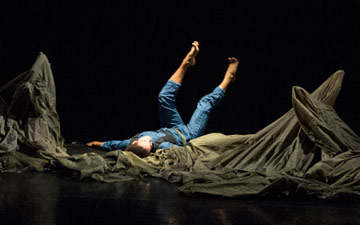
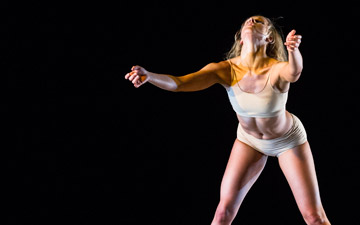


You must be logged in to post a comment.